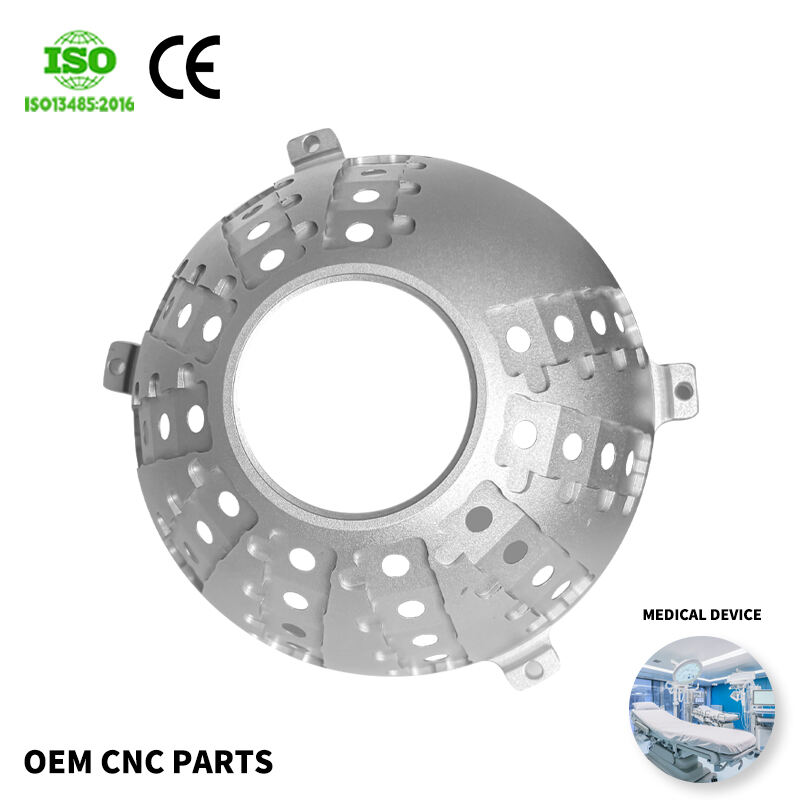Understanding Modern CNC Machining Processes
Manufacturing professionals often face critical decisions when selecting the most appropriate machining process for their production requirements. CNC turning and milling represent two fundamental yet distinct approaches in modern manufacturing, each offering unique advantages and specialized applications. Making the right choice between these processes can significantly impact production efficiency, cost-effectiveness, and final product quality.
The manufacturing landscape continues to evolve with advancing technology, making it crucial for decision-makers to thoroughly understand the capabilities and limitations of both CNC turning and milling. This comprehensive guide will explore the key factors that influence process selection, helping you make informed decisions for your specific manufacturing needs.
Core Differences Between CNC Turning and Milling Operations
Fundamental Operating Principles
CNC turning and milling operate on distinctly different principles. In turning operations, the workpiece rotates while a stationary cutting tool removes material to create cylindrical parts. The primary motion comes from the spinning workpiece, while the cutting tool moves linearly along various axes. This process excels in creating symmetrical, rounded components.
Milling, conversely, involves a rotating cutting tool moving against a stationary workpiece. The multi-point cutting tool can move along multiple axes, allowing for the creation of complex geometries and features. This fundamental difference in operation drives many of the subsequent considerations in process selection.
Geometric Capabilities and Limitations
Each process demonstrates specific strengths in producing different geometries. Turning operations excel at creating cylindrical parts with circular cross-sections, such as shafts, pins, and other rotationally symmetric components. The process naturally handles external and internal diameters, tapers, and threads with high precision.
Milling shows its strength in producing prismatic parts with flat surfaces, slots, pockets, and complex 3D contours. It offers superior flexibility in creating non-cylindrical features and can machine multiple faces of a part in a single setup. Understanding these geometric capabilities is crucial for matching the process to your part requirements.
Material Considerations and Process Selection
Material Properties and Machining Behavior
Different materials respond uniquely to CNC turning and milling operations. Harder materials might benefit from turning's continuous cutting action, which can maintain consistent cutting forces. Softer materials or those prone to work hardening might be better suited to milling's intermittent cutting nature.
The material's microstructure and composition also influence process selection. For instance, materials with high tensile strength might require specific cutting parameters more easily achieved in one process over the other. Consider how your material's properties align with each process's characteristics to ensure optimal results.
Surface Finish Requirements
Surface finish requirements play a crucial role in process selection. Turning typically produces excellent surface finishes on cylindrical surfaces due to the continuous cutting action. This makes it particularly suitable for parts requiring high-quality external finishes or precise dimensional control.
Milling can achieve good surface finishes but may require additional finishing passes or secondary operations depending on the material and cutting parameters. The intermittent nature of milling can sometimes leave tool marks that need consideration in your process planning.
Production Volume and Economic Factors
Batch Size Considerations
Production volume significantly influences the choice between CNC turning and milling. Turning often proves more efficient for large batches of cylindrical parts due to shorter cycle times and simpler setups. The continuous cutting action and potential for automation make it well-suited for high-volume production.
Milling might be more appropriate for smaller batches or prototype runs, especially when parts require complex features or frequent design changes. The flexibility of milling operations allows for quick adjustments and modifications without significant tooling investments.
Cost Analysis and Equipment Investment
Equipment costs and operational expenses vary between turning and milling processes. Turning centers typically require less initial investment than comparable milling centers, especially when considering basic operations. However, more advanced multi-axis turning centers can represent significant capital investments.
Consider the long-term cost implications, including tooling expenses, maintenance requirements, and operator training. Factor in the potential need for secondary operations and the impact on overall production costs when making your decision.
Advanced Technology and Future Considerations
Hybrid Manufacturing Solutions
Modern manufacturing increasingly embraces hybrid solutions that combine turning and milling capabilities in a single machine. These multi-tasking machines offer the flexibility to perform both operations, potentially reducing setup times and improving overall efficiency. Consider whether such hybrid solutions might benefit your production requirements.
The integration of advanced control systems and automation features continues to enhance the capabilities of both CNC turning and milling. These technological advances may influence your decision-making process, especially when planning for future production needs.
Industry Trends and Innovation
Stay informed about emerging trends in CNC machining technology. Developments in tooling, control systems, and machine capabilities continue to expand the possibilities for both turning and milling operations. Consider how these advances might impact your process selection and future manufacturing capabilities.
The growing emphasis on sustainable manufacturing and energy efficiency may also influence your choice between CNC turning and milling. Consider the environmental impact and energy consumption patterns of each process in your decision-making framework.
Frequently Asked Questions
What are the key advantages of CNC turning over milling?
CNC turning excels in producing cylindrical parts with excellent surface finishes, offers faster cycle times for rotationally symmetric components, and typically requires less complex setup procedures. It's particularly effective for high-volume production of round parts and can achieve superior concentricity in cylindrical features.
How does part complexity affect the choice between turning and milling?
Part complexity significantly influences process selection. Milling is generally better suited for complex geometries with multiple features, non-cylindrical shapes, and intricate surface patterns. Turning is optimal for simpler, rotationally symmetric parts but may require secondary operations for complex features.
Can both processes be used on the same part?
Yes, many parts benefit from combining both processes, either through separate operations or using multi-tasking machines. This approach allows manufacturers to leverage the strengths of both turning and milling to achieve optimal results, particularly for complex components requiring both cylindrical and prismatic features.

